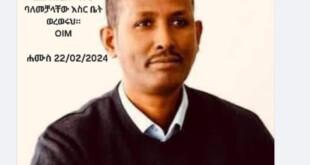Qabsoon mirga sabaaf ykn abbaa-biyyummaaf taasifamu kamuu waantota armaan gadii guutachuu qaba.
A. Obsa
B. Murannoo
C. Qophii Sammuu (Beekumsaa fi tooftaa)
D. Woreegama
Qabsoo wolabummaa Hindi India independence movement sababa bittaa Ingiliz (1858-1947) irra tureef kan jalqabane. Qabsoon Hindoitaa gulantaalee fi bifa garaagaraa qaba ture. Gariin non-violent yo ta’u gariin revolutionary ( worraaqaa) turan.
Isaan keessaa jaarmiyaan Indian National Congress(INC) jedhamee beekkamu qara qabsoo hidhannoo kan jalqabe ta’ulle boodarra gara qabsoo nageellittiitti jirjiirame. INC namoota bebbeekkamoo fi kabajamoodhaan kan hundaa’ee ta’ee gaaffiin jaarmiyaa kanaa mirgoota bu’uuraa kan akka wolqixxummaa hojii argachuu, mirgoota diinagdee kkf ture. Jaarraa 20ssoo keessa garuu hoggantoonni radical (gonnonneessitoonni)* akka LAL, PAL, BAL fi AUROBINDO GHOSH jedhaman dhufanii gaaffii jajjabduun (wolabummaa/political independence) gad bayan. Bara 1920tti qabsoon INC yaada hogganaa isaanii Mohandas Karamchand Gandhi fudhachuudhaan qabsoo Diddaa Lola-malee (non-violent resistance) irratti woliigalanii itti fufan.
Qabsaawonni Hindii bebeekkamoon qabsoo hidhannoo (irree) ti cichan kan akka Netaji Subhas Chandra Bose fi Bhagat Singh karaan nu baasu kanuma qofa jechaa turan.
Qabsoo Hindii finiinsuu keessatti gaheen barreessitoonni, wolaleessitoonnii fi weellistoonni qaban baayyee dha.
Poets & writers such as Allama Iqbal, Mohammad Ali Jouhar, Rabindranath Tagore,Subramaniya Bharathi and Kazi Nazrul Islam used literature, poetry and speech as a tool for political awareness.
Weellistoota fi barreessitoonni akka Allama Iqbal, Mohammad Ali Jouhar, Rabindranath Tagore, Subramaniya Baharathi fi Kazi Narul Islam wolaloo, katabbiiwwanii fi haasawa isaaniin dammaqina siyaasaa guddaa uuman.
Feminists such as Sarojini Naidu and Begum Rokeya championed the emancipation of Indian women and their participation in national politics.
Dubartoonni akka Saaroojinii Nayiduu fi Beegam Rokeya dubaroonni Hindii akka bilisa tahanii siyaasa keessatti hirmaatan dadammaqsuu fi ijaaruudhaan gahee guddaa taphataniiru.
Babasaheb Ambedkar ammoo gurmuu hawasaa miidhamaa fi tuffatamaa (Fakkeennaa fi biyya keennatti tumtuu fi Duugduun akkuma tuffatam Hindi keessa gosoota cast jedhamanii hawaasni ifi keessaa xeelleggatu hedduu turan) ijaaruudhaan Qabsoo wolabummaa keessatti hirmaachisuudhaan gumaacha guddaa taphate. -Babsaheb Ambedikar championed the cause of the disadvantaged sections of Indian society within the larger independence movement.
Yennaa Lola Addunyaa Lammeessoo qabsoon wolabummaa uummata Hindii bayyee cimee finiine. Yeroo kanatti Waamichi Diddaa fi mormii QUIT INDIA MOVEMENT jedhamuu fi Gaandiin hogganamu dhiibba guddaa biyyittiirratti fiduudhaan dhalattoonni Hindi kan Humna woraana biyyoolessa Hindi kan Ingiliz toowattu akka diduu fi ganu taasise. Diddaanii fi murannoon loltoota Biyyoolessa lammiiwwan Hindi kan bara 1946 Ingiliz rifachiisee dirqamtee akka biyya Hindi gallakkistu taasise.
The period of the Second World War saw the peak of the campaigns by the Quit India movement (led by Mahatma Gandhi) which had a feeble impact and the Indian National Army (INA) movement (led by Netaji Subhas Chandra Bose) which had a gigantic impact that not only triggered Royal Indian Navy Mutiny in 1946 but also had significant impact on British Indian Army, eventually resulting in the withdrawal of the British under compulsion.
Bhārat Chhodho Āndolan), or the India August Movement (August Kranti), was a civil disobedience movement launched in India during World War II on 9 August 1942 by Mohandas Karamchand Gandhi.[1] The All-India Congress Committee proclaimed a mass protest demanding what Gandhi called “An Orderly British Withdrawal” from India. It was for the determined, which appears in his call to Do or Die, issued on 8 August at the Gowalia Tank Maidan in Mumbai in 1942. The British were prepared to act. Almost the entire INC leadership, and not just at the national level, was imprisoned without trial within hours after Gandhi’s speech.
Gaandiin bara Hageyya 9, 1942 “British biyya keenyaa haa baatu!” Jechuudhaan mormii cimaa diddaa uummataa waame.
Akkuma Gaandiin gadbahee labsii tana dubbateen isaa fi hoggantoota INC maraa hidhe.
Most spent the rest of the war in prison and out of contact with the masses. The British had the support of the Viceroy’s Council (which had a majority of Indians), of the All India Muslim League,the Hindu Mahasabha, the Rashtriya Swayamsevak Sangh, the Communist Party, the princely states, the Indian Imperial Police, the British Indian Army and the Indian Civil Service. Many Indian businessmen were profiting from heavy wartime spending and did not support Quit India. Many students paid more attention to Subhas Chandra Bose, who was in exile and supporting the Axis Powers.
Sochiin jaarmiyaalee garaagaraa kunin biyya Hindi gara Bilisummaa ti geesse.
Kanumaan bara 1947 Lallaba Wolabummaa Hindi labsame. Hindii fi Paakistaan Ingiliz jalatti biyya tokko turan. Sababa garaagarummaa fi woldhabdee amantaatiin Bilisummaa duuba biyya garaagaraa ta’an. Gaandiin akka Hindii fi Paakistaan wolitta hin buune waan hin godhin hin qabu. Garuu hin danda’amne.
work of these various movements led ultimately to the Indian Independence Act 1947, which created the independent dominions of India and Pakistan. India remained a Dominion of the Crown until 26 January 1950, when the Constitution of India came into force, establishing the Republic of India; Pakistan was a dominion until 1956, when it adopted its first republican constitution.
Indian independence movement was a mass-based movement that encompassed various sections of society. It also underwent a process of constant ideological evolution.




